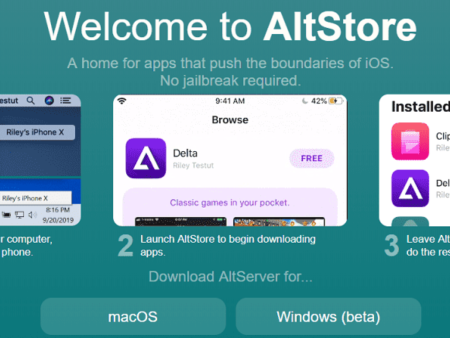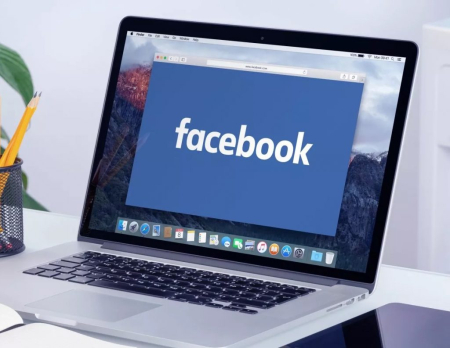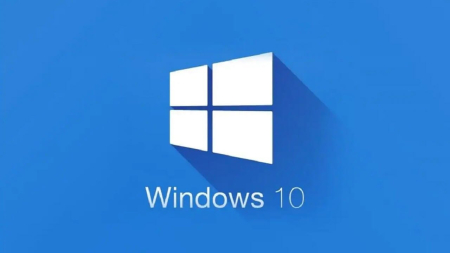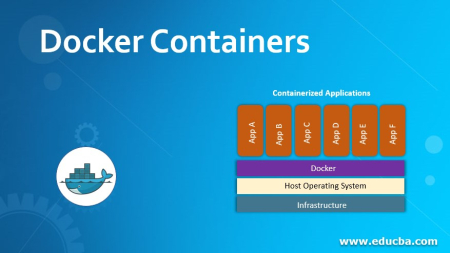Exploring Limitless Possibilities of Virtual Reality: A Comprehensive Guide
-
10/04/2023
-
1035
-
0
Virtual Reality (VR) technology has rapidly advanced in recent years, providing users with an immersive experience that feels almost as real as the physical world. As a result, the possibilities of VR have become limitless, ranging from gaming and entertainment to education and training, making it an exciting and innovative field to explore.
Related posts
How to increase app users for Mobile games
Best Tips to Increase iOS app installs and downloads on App Store organic
1. Overview of Virtual Reality Technology
Virtual Reality (VR) technology is a computer-generated simulation of an artificial environment that can be experienced through various types of devices, such as head-mounted displays, hand controllers, and other sensory input devices. VR technology can simulate a wide range of experiences and environments, including real-life settings, fictional worlds, and even abstract spaces.
The basic components of a VR system include a computer, a display device, input devices, and software that generates and renders the virtual environment. Some popular VR headsets and platforms include Oculus Rift, HTC Vive, PlayStation VR, and Google Cardboard.
 Overview of Virtual Reality Technology, Source: Asoservice.com
Overview of Virtual Reality Technology, Source: Asoservice.com
VR technology is used in a variety of industries, such as gaming, education, healthcare, and training. In gaming, VR allows players to immerse themselves in a virtual world and interact with the environment and characters in ways that were not previously possible. In education, VR can be used to provide immersive learning experiences, such as virtual field trips or interactive science experiments. In healthcare, VR is used for patient therapy and rehabilitation, as well as for training medical professionals. In training, VR can simulate hazardous or dangerous scenarios, allowing trainees to practice skills and procedures in a safe environment.
The development of VR technology is still ongoing, with advancements in display technology; haptic feedback, and artificial intelligence allowing for more realistic and immersive experiences. VR technology has the potential to revolutionize the way we interact with digital content and with each other, and is expected to continue to grow in popularity and use in the coming years.
2. Applications of VR in Entertainment
Virtual Reality (VR) technology has many applications in the entertainment industry; including gaming, movies, and live events. Here are some examples of how VR is being used in entertainment:
Gaming: VR technology is being used to create immersive gaming experiences that allow players to feel like they are inside the game. Players can move around and interact with the environment using controllers and sensors, and the VR headset tracks their movements and displays the game world in 3D.
Movies and videos: VR technology is being used to create 360-degree videos and virtual reality movies that allow viewers to look around and explore the environment as if they were there in person. This technology is also being used to create immersive experiences for movie trailers and promotional content.
Live events: VR technology is being used to create virtual concerts and events that allow fans to experience the performance from anywhere in the world. Fans can use VR headsets to feel like they are in the audience; and some VR platforms also allow fans to interact with the performers and other fans.
Theme parks and attractions: VR technology is being used to create virtual reality rides and attractions that allow guests to experience exciting and immersive environments. VR is also being used to enhance existing rides and attractions by adding virtual elements to the real-world experience.
Overall, VR technology is providing new and exciting ways for audiences to experience entertainment; and is allowing creators to push the boundaries of what is possible in gaming, movies, and live events.
3. Applications of Virtual Reality in Education and Training
Virtual Reality (VR) technology is increasingly being used in education and training to provide immersive and interactive experiences that enhance learning and skills development. Here are some examples of how VR is being used in these fields:
Simulations: VR technology is being used to create simulations that allow students and trainees to practice skills and procedures in a safe and controlled environment. This is particularly useful in fields such as medicine; aviation, and the military, where mistakes can have serious consequences.
Field trips: VR technology is being used to create virtual field trips that allow students to explore different environments and cultures without leaving the classroom. This can help to make learning more engaging and accessible; particularly for students who may not have the opportunity to visit these places in person.
Language learning: VR technology is being used to create immersive language learning experiences that allow students to practice speaking and listening in a simulated environment. This can help to improve language proficiency and confidence.
Historical reconstructions: VR technology is being used to create historical reconstructions that allow students to experience different periods and events in history. This can help to bring history to life and make it more engaging and memorable.
Soft skills training: VR technology is being used to provide training in soft skills such as communication; teamwork, and leadership. VR simulations can provide realistic scenarios that allow trainees to practice and develop these skills in a safe and supportive environment.
Overall, VR technology is providing new and innovative ways to enhance education and training; and is allowing learners to experience and practice skills in ways that were not previously possible. To make effective, it is important to buy app reviews from real users to increase the effectiveness of the campaign.
4. Applications of VR in Healthcare and Therapy
Virtual Reality (VR) technology has many applications in the healthcare industry, particularly in therapy and rehabilitation. Here are some examples of how VR is being used in these fields:
Pain management: VR technology is being used to provide distraction and relaxation techniques to patients undergoing painful medical procedures; such as burn wound care, chemotherapy, or dental procedures. The immersive VR environment can help to distract patients from the pain and discomfort they are experiencing.
Rehabilitation: VR technology is being used to provide immersive and engaging rehabilitation exercises for patients recovering from injury; illness, or surgery. The virtual environment can simulate different scenarios and activities to help patients practice movements and skills in a safe and controlled environment.
Mental health therapy: VR technology is being used to provide exposure therapy for patients with anxiety disorders; phobias, and post-traumatic stress disorder (PTSD). The VR environment can simulate different scenarios that trigger the patient's symptoms, allowing them to practice coping strategies in a controlled environment.
Medical training: VR technology is being used to provide medical training for healthcare professionals; particularly in areas such as surgery and anatomy. The immersive VR environment can provide a realistic and interactive experience; that allows trainees to practice procedures and techniques in a safe and controlled environment.
Elderly care: VR technology is being used to provide entertainment and socialization for elderly patients who may be isolated or unable to engage in physical activities. The VR environment can provide engaging; and interactive experiences that can help to reduce loneliness and improve mental health.
Overall, VR technology is providing new and innovative ways to enhance healthcare and therapy; and is allowing patients and healthcare professionals to experience and practice skills in ways that were not previously possible.
5. Limitations and Challenges of VR
While Virtual Reality (VR) technology has many potential benefits and applications, there are also several limitations and challenges that need to be considered. Here are some examples:
Cost: VR technology can be expensive, particularly high-end VR systems that require powerful computers and specialized equipment. This can limit access to the technology for individuals and organizations that cannot afford it.
Motion sickness: Some individuals may experience motion sickness or discomfort when using VR technology; particularly if the graphics are not smooth or if there is a delay between the user's movements and the display.
Social isolation: Using VR technology can be a solitary experience, which can lead to social isolation and decreased social interaction. This is particularly a concern for children and adolescents, who may spend more time in virtual environments than interacting with peers.
Overall, while VR technology has many potential benefits and applications; it is important to be aware of these limitations and challenges in order to ensure that it is used in a safe, ethical, and effective way. This strategy offers several benefits to app developers; such as securing funding without relying on traditional funding sources; building a community of supporters, and generating buzz and increasing quantity of app downloads.
6. Future of Virtual Reality Technology
The future of Virtual Reality (VR) technology is exciting, and there are many potential developments and advancements that could transform the way we interact with digital environments. Here are some possible directions for the future of VR:
Improved graphics: One of the key areas for development in VR technology is graphics. As processing power and display technology continue to improve, VR environments could become even more realistic and immersive.
Haptic feedback: Haptic feedback technology could allow users to feel virtual objects and surfaces, adding another layer of realism to VR environments. This could enhance the effectiveness of VR applications in fields such as surgery, engineering, and product design.
Wireless technology: The development of wireless VR technology could allow users to move around freely in VR environments without being tethered to a computer or other device. This could increase the flexibility and usability of VR technology, particularly in fields such as architecture, construction, and entertainment.
Augmented reality: Augmented reality (AR) technology combines virtual elements with the real world, creating a hybrid environment that could have many potential applications in fields such as education, tourism, and retail.
Social interaction: As VR technology becomes more widespread, there could be more opportunities for social interaction within virtual environments. This could include multiplayer games, virtual events, and remote collaboration in fields such as architecture and engineering.
Overall, the future of VR technology is likely to be characterized by continued innovation and development, as well as new and unexpected applications in a wide range of fields. As the technology becomes more advanced and accessible, it could have a transformative impact on the way we live, work, and interact with digital environments. And you can buy app installs from Google Ads campaigns for your apps to get more real users.
Conclusion
Virtual Reality (VR) technology is rapidly evolving and opening up new possibilities in various industries and fields, paving the way for exciting advancements that could transform the way we experience and interact with digital environments.
Related posts
https://asoservice.com/app-installs-downloads
https://asoservice.com/optimize-aso
Thanks so much for reading this article.
Source: Buy App Store Optimization services




































Leave a Reply
Your e-mail address will not be published. Required fields are marked *